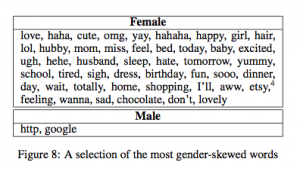Yeah, you read that right. Got you to look at the post, didn’t it?
This is not (just) an attention-getting shock tactic (though a little more site traffic has rarely hurt anyone. I guess we’ll see whether I come to regret this). Anders Behring Breivik, on trial in Norway for killing 77 people with a bomb and a shooting spree because he wanted to “save” Norway from supposedly nefarious multiculturalism, does indeed have point. Just not the one he thinks he does.
As reported in a number of news outlets (my source here is an April 23 article in the New York Daily News) Breivik has declared questions about his sanity a “racist plot” to discredit him. The confessed mass killer correctly pointed out that the sanity of Islamic terrorists generally isn’t questioned, and wondered therefore why the issue was being raised in relation to his own behavior.
Breivik, of course, meant that this inquiry into his sanity was racist against him as a white person—more or less his attitude toward all things he dislikes. And he is wrong about that. But he’s not wrong that there’s a racist logic at work in that differential accusation of insanity.
Whiteness has historically been constructed as rational and controlled through constructing nonwhiteness as irrational and out of control (I know parenthetical citations and works cited are bad form in a blog, but the sources are too numerous to link, so here it comes, with apologies: Dyer 1997; Floyd 2009; Roediger 1991; Savran 1998).
Whiteness, then, is at once stabilized by the deployment of this constitutive Other (as I noted in a 2010 post on Nietzsche, a “good vs. bad” morality) and simultaneously holds that Other inferior for failing to live up to the standards set by the dominant ( a “good vs. evil” morality).
According to this structure, “of course” brown folks from the Muslim world would be violent and destructive, because they’re Other to the norm of control, at the same time that this alterity is also evidence of their “pathologized psyches” (Puar and Rai 2002, p. 117).
Moreover, whiteness is the unmarked category that masquerades as no category at all, as default, universal, invisible, nothing (Chambers 1997; Dyer 1997; Frankenberg 1993; Hill 1997a, 1997b; Kusz 2001, 2007; and Newitz and Wray 1997a), which means that white folks are understood as individuals. Nonwhite people, however, are frequently imagined to be explained by the category to which they belong.
Hence, the sanity of the Islamic terrorist isn’t questioned—we already “know” he’s insane because members of his group definitionally are (as is explained in considerably more depth in Puar and Rai 2002). But there is a presumption that a white Norwegian is rational and individual. His extreme violence requires an explanation. He must be insane to do such things.
This happens in much smaller ways all the time. I’ve been startled to notice in the last little while the ways that people’s bad behavior is excused under exactly these sort of racist premises. Being a jerk is a personality flaw, not the essence of somebody’s racial or ethnic category.
It is fundamentally racist to ascribe anybody’s behavior—good or bad—to their race.
Now, I’m not some sort of radical individualist (as I hope is clear from my posting history). We should absolutely examine and question the norms and options available to people on the basis of belonging to whatever category, because these do absolutely constrain behavior.
But we can’t let “Person A is a member of category B, which comes with XYZ baggage, which influenced the way they ultimately behaved” become “Person A did X because they are B.” Ever.
Works Cited
Chambers, Ross. 1997. “The Unexamined.” In Whiteness: A Critical Reader, ed. Mike Hill, 187–203. New York: New York Univ. Press.
Dyer, Richard. 1997. White. London: Routledge.
Floyd, Kevin. 2009. The Reification of Desire: Toward a Queer Marxism. Minneapolis: Univ. of Minnesota Press.
Frankenberg, Ruth. 1993. White Women, Race Matters: The Social Construction of Whiteness. Minneapolis: Univ. of Minnesota Press.
Hill, Mike. 1997a. “Introduction: Vipers in Shangri-la Whiteness, Writing, and Other Ordinary Terrors.” In Whiteness: A Critical Reader, ed. Mike Hill, 1–18. New York: New York Univ. Press.
Hill, Mike. 1997b. “Can Whiteness Speak?: Institutional Antinomies, Ontological Disasters, and Three Hollywood Films.” In White Trash: Race and Class in America, ed. Annalee Newitz and Matt Wray, 155–73. New York: Routledge.
Kusz, Kyle W. 2001. “‘I Want to Be the Minority’: The Politics of Youthful White Masculinities in Sport and Popular Culture in 1990s America.” Journal of Sport and Social Issues 25 (4): 390–416.
Kusz, Kyle W. 2007. “From NASCAR Nation to Pat Tillman: Notes on Sport and the Politics of White Cultural Nationalism in Post-9/11 America.” Journal of Sport and Social Issues 31 (1): 77–88.
Newitz, Annalee, and Matt Wray. 1997a. “Introduction.” In White Trash: Race and Class in America, ed. Annalee Newitz and Matt Wray, 1–12. New York: Routledge.
Newitz, Annalee, and Matt Wray. 1997b. “What is ‘White Trash’? Stereotypes and Economic Conditions of Poor Whites in the United States.” In Whiteness: A Critical Reader, ed. Mike Hill, 168–84. New York: New York Univ. Press.
Puar, Jasbir K., and Amit S. Rai. 2002. “Monster, Terrorist, Fag: The War on Terrorism and the Production of Docile Patriots.” Social Text 20 (3): 117–148.
Roediger, David R. 1991. The Wages of Whiteness: Race and the Making of the American Working Class. London: Verso.
Savran, David. 1998. Taking It Like a Man: White Masculinity, Masochism, and Contemporary American Culture. Princeton, NJ: Princeton Univ. Press.



